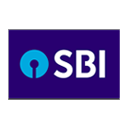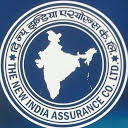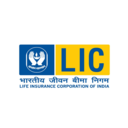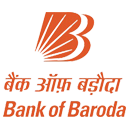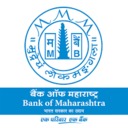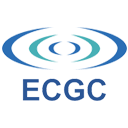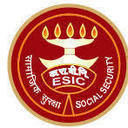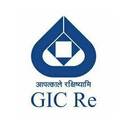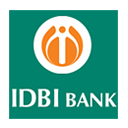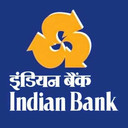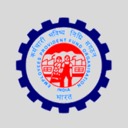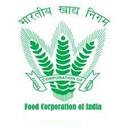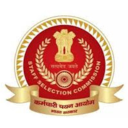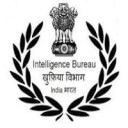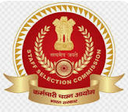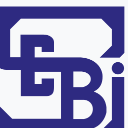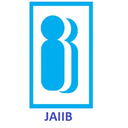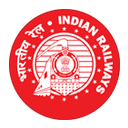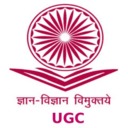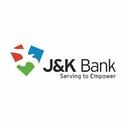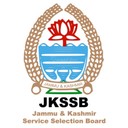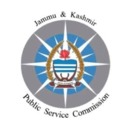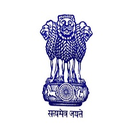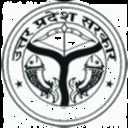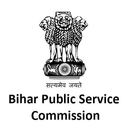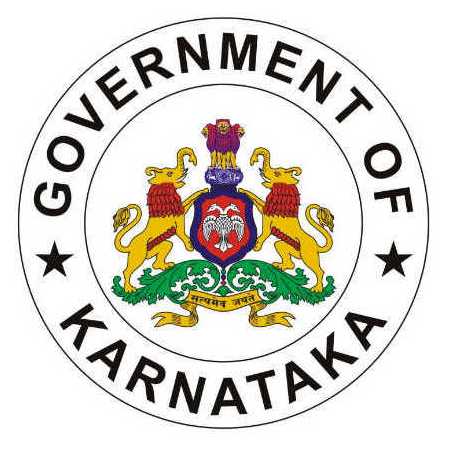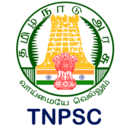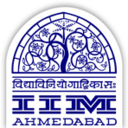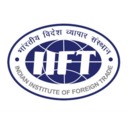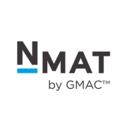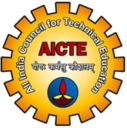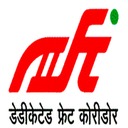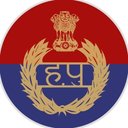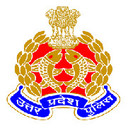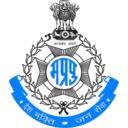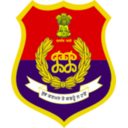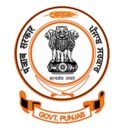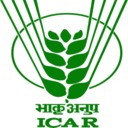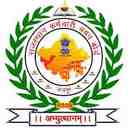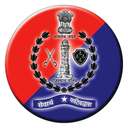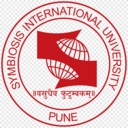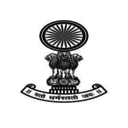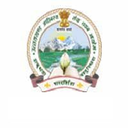JAIIB Syllabus: The JAIIB exam, conducted by the Indian Institute of Banking and Finance (IIBF), helps banking and finance professionals improve their knowledge and skills in the banking field. The exam covers key topics such as the role of finance in the economy, banking operations, accounting, financial management, retail banking, wealth management, digital banking, banking technology, and customer service. It has been specially designed to help banking and insurance professionals handle day-to-day tasks and gain a better understanding of the financial sector. The exam has four main subjects:
- Indian Economy & Indian Financial System
- Principles & Practices of Banking
- Accounting & Financial Management for Bankers
- Retail Banking & Wealth Management
In this blog, we have provided the detailed syllabus for each subject (as per the last exam cycle), the exam structure, and other important information to help candidates prepare effectively and smartly.
JAIIB Syllabus 2026
The JAIIB syllabus is specifically designed for banking and finance professionals who wish to appear for the JAIIB exam. This examination is only for those candidates who are currently employed in banks or financial institutions and is not available to the general public. To perform well, candidates should thoroughly review and study all the topics listed in the official JAIIB syllabus to ensure effective exam preparation.
How Many Papers are there in the JAIIB 2026 Exam?
The JAIIB Exam consists of 4 compulsory papers IE & IFS, PPB, AFM, and RBWM (as per the last exam cycle). The details of the four papers are as follows:
- Indian Economy & Indian Financial System
- Principles & Practices of Banking
- Accounting & Financial Management for Bankers
- Retail Banking & Wealth Management
Attempt Free JAIIB Mock Test
JAIIB Syllabus 2026
The JAIIB exam consists of four compulsory papers, with each paper divided into four comprehensive modules. The details of the JAIIB Syllabus as per the last exam cycle are as follows:
| Papers | Topics Covered |
|---|
| Indian Economy & Indian Financial System | Module A: Indian Economic Architecture
Module B: Economic Concepts Related to Banking
Module C: Indian Financial Architecture
Module D: Financial Products and Services |
| Principles & Practices of Banking | Module A: General Banking Operations
Module B: Functions of Banks
Module C: Banking Technology
Module D: Ethics in Banks and Financial Institutions |
| Accounting & Financial Management for Bankers | Module A: Accounting Principles and Processes
Module B: Financial Statements and Core Banking Systems
Module C: Financial Management
Module D: Taxation and Fundamentals of Costing |
| Retail Banking & Wealth Management | Module A: Introduction to Retail Banking
Module B: Retail Products and Recovery
Module C: Support Services – Marketing of Banking Services/Products
Module D: Wealth Management |
Download JAIIB Memory-Based Question Bank PDF for Free
What is the Exam Pattern for JAIIB 2026?
The JAIIB exam (as per the last exam cycle) is expected to be conducted in online mode, with each paper comprising 100 questions, carrying a total of 100 marks, and a duration of 2 hours for completion. There will be no negative marking for incorrect or unattempted responses. The detailed structure of the exam pattern is outlined below:
| Feature | Details |
|---|
| Total Questions | 100 objective-type MCQs per paper |
| Total Marks | 100 marks per paper |
| Case-Based Questions | Yes, included in all subjects |
| Numerical Input Questions | Present in papers like AFM |
| Exam Mode | Online (CBT) |
| Negative Marking | No negative marking |
| Assessment Areas | Basic knowledge, application skills, case handling, and numerical aptitude |
Attempt JAIIB Previous Year Papers
JAIIB Exam Structure 2026
Each of the four compulsory papers includes 100 multiple-choice questions worth 100 marks.
| Paper Name | Total Marks | Exam Duration | Passing Marks |
|---|
| Indian Economy & Indian Financial System (IE & IFS) | 100 | 2 Hours | 50 (or 45 with 50% aggregate) |
| Principles & Practices of Banking (PPB) | 100 | 2 Hours | 50 (or 45 with 50% aggregate) |
| Accounting & Financial Management for Bankers (AFM) | 100 | 2 Hours | 50 (or 45 with 50% aggregate) |
| Retail Banking & Wealth Management (RBWM) | 100 | 2 Hours | 50 (or 45 with 50% aggregate) |
What are the JAIIB 2026 Exam Dates?
Every year, the JAIIB exam is held twice, once in May and once in November. The IIBF JAIIB exam dates for each of the four compulsory papers are expected to be released soon by the Indian Institute of Banking and Finance through their official IIBF website.
| Papers | May Cycle Exam Date | Nov Cycle Exam Date |
|---|
| Indian Economy & Indian Financial System | TBA | TBA |
| Principles & Practices of Banking | TBA | TBA |
| Accounting & Financial Management for Bankers | TBA | TBA |
| Retail Banking & Wealth Management | TBA | TBA |
Explore JAIIB Courses
What is the JAIIB IE & IFS syllabus?
The JAIIB IE and IFS Syllabus consists of a total of four modules: Indian Economic Architecture, Economic Concepts Related to Banking, Indian Financial Architecture, and Financial Products and Services, followed by key topics. The details of the key topics are as follows:
Module A: Indian Economic Architecture
This module consists of 11 sections. The detailed topics from each section are as follows:
| Section | Topics |
|---|
| 1. Overview of Indian Economy | - Evolution of Indian Economy
- Basic Characteristics
- Pre-British Economy
- Economy till 2008 & post-2008
- Structural changes |
| 2. Economic Planning in India | - Definition, History, Objectives
- Types of Planning
- Achievements
- Financial resources for 5-Year Plans |
| 3. Sectors of Indian Economy | - Primary, Secondary, Tertiary, Quaternary & Quinary Sectors
- Different Revolutions (Green, White, etc.)
- Sector differences & GDP contribution
- Agriculture, Industry, Services
- Employment in Secondary Sector
- Sunrise Sector
- Organised & Unorganised sectors |
| 4. Priority Sector & MSMEs | - Definition & Role of Priority Sector
- Identified Priority Sectors
- Priority Sector Lending Norms
- MSME: Definition, Role & Contribution to GDP
- Initiatives: Atmanirbhar Bharat, Make in India, Start-up India, Stand-up India |
| 5. Infrastructure & Social Infrastructure | - Role in Economic Development
- Energy, Power, Transport (Rail, Road, Aviation)
- Social Sector: Health, Education, Family Welfare
- Development of Health Infrastructure |
| 6. Globalisation – Impact on India | - Advocacy of Globalisation
- Impact on India
- Fair Globalisation & Policy Needs
- Reverse Globalisation & Protectionism |
| 7. Economic Reforms | - Overview of Reforms
- Transformation (Real Sector, Financial Sector)
- Global Integration
- Indian Economic Reforms |
| 8. Foreign Trade Policy (FTP), FDI & FII | - Structural Changes in 1990s FTP
- FTP 2015–2020
- Challenges for upcoming FTP
- FDI & FII – Trends
- Economic Growth vs Development |
| 9. International Economic Organisations | - IMF, World Bank, WTO (India's role)
- Regional Economic Co-operations
- Recent Issues |
| 10. Climate Change & SDGs | - Core elements of Sustainable Development
- Global Issues & Initiatives
- India's Progress
- CSR & Climate Action |
| 11. Key Issues in Indian Economy | - Poverty Alleviation
- Jobless Growth
- Rising Inequality
- Migration & Resource Pressure
- Remedies
- Pandemic Challenges |
Module B: Economic Concepts Related to Banking
This module consists of 8 sections. The detailed topics from each section are as follows:
| Section | Topics |
|---|
| 1. Fundamentals of Economics | - Microeconomics & Macroeconomics
- Market, Command & Mixed Economies |
| 2. Supply & Demand | - Demand Schedule & Shifts
- Supply Schedule & Shifts
- Equilibrium: Price & Quantity changes |
| 3. Money Supply & Inflation | - What is Money?
- Measures of Money Supply
- Inflation – Causes & Measures |
| 4. Theories of Interest | - Classical Theory
- Keynes' Liquidity Preference Theory
- Money Demand Curve
- Rate of Interest Determination
- Effect of Money Supply Shifts
- IS–LM Curve Model |
| 5. Business Cycles | - Characteristics
- Phases |
| 6. Monetary & Fiscal Policy | - Tools of Monetary Policy
- India's Response to Global Financial Crisis
- Fiscal Policy & FRBM Act |
| 7. National Income & GDP | - Concepts & Computation
- Utility |
| 8. Union Budget | - Receipts & Expenditure
- Plan Expenditure
- Deficit Concepts |
Module C: Indian Financial Architecture
This module consists of 9 sections. The detailed topics from each section are as follows:
| Section | Topics |
|---|
| 1. Indian Financial System – Overview | - Definition & Phases (Pre-1951, 1951–80s, Post-90s)
- Narasimham Committee 1991
- Reforms (1992–2008)
- Present Status |
| 2. Indian Banking Structure | - Development & Functions
- Scheduled Commercial Banks – Types & Functions
- Local Area Banks
- RRBs
- Cooperative Banks
- Payment Banks & Small Finance Banks
- NBFCs & RBI Guidelines |
| 3. Key Banking Legislations | - RBI Act, 1934 (Ch I–V, Schedules)
- Banking Regulation Act, 1949 (Sec 1–56) |
| 4. Development Financial Institutions (DFIs) | - Evolution & Objectives
- Post-Independence gaps
- Classification & Role
- Changing Role & Universal Banks
- Institutions: IFCI, ICICI, IDBI, SIDBI, EXIM, NABARD, NHB, NaBFID |
| 5. Microfinance Institutions (MFIs) | - Evolution, Grameen Model
- SHG-Bank Linkage, JLGs
- Regulatory Framework & RBI Directions 2022
- Fair Practices Code |
| 6. Non-Banking Financial Companies (NBFCs) | - Evolution & Role in Inclusive Growth
- Regulators, Classification, RBI Oversight
- Types, Owned Funds & Net Owned Funds
- Bank Finance, Fair Practice Code
- Ombudsman Scheme, Scale Based Regulation (SBR) |
| 7. Insurance Companies | - History, Privatisation & FDI
- Global & Indian Insurance
- Penetration & Density
- Number of Players
- Legislations, Intermediaries, Reinsurance
- Insurance Repository/Accounts |
| 8. Regulators of Indian Financial System | - RBI, SEBI, IRDAI, PFRDA - Roles |
| 9. Reforms & Developments | - Bad Banks
- Infrastructure Financing
- NaBFID
- EASE Reforms |
Module D: Financial Products & Services
This module consists of 17 sections. The detailed topics from each section are as follows:
| Section | Topics |
|---|
| 1. Overview of Financial Markets | - Meaning, Evolution
- Segments & Functions
- Price Discovery |
| 2. Money & Capital Markets | - Call/Notice/Term Money
- T-Bills, CDs, CPs
- Repo, Tri-Repo, BRDS, LTRO |
| 3. Debt/Fixed Income Markets | - Govt Securities, Bond Valuation
- Auctions, Primary Dealers
- FIMMDA, RBI Retail Direct Scheme
- Corporate Bonds, Inter-Corporate Deposits |
| 4. Capital Markets & Stock Exchanges | - Primary & Secondary Markets
- SEBI Regulations
- Capital Issues & Eligibility Norms
- Intermediaries, ASBA, QIP |
| 5. Forex Market | - Profile & Evolution in India
- Characteristics & Participants
- LIBOR & ARRs
- FEDAI, FEMA 1999
- FX-Retail Platform, USDX, ADR, GDR |
| 6. Market Interconnection | - Reasons, Importance & Levels
- Integration in India
- Asian Clearing Union
- Interconnectedness (Money, Credit, Capital, Forex)
- Integrated Treasury & Contagion Effect |
| 7. Merchant Banking Services | - Meaning & History
- Development in India
- Merchant vs Commercial Banking
- SEBI Regulations & Codes of Conduct |
| 8. Derivatives Market (incl. CDS) | - Meaning, History, Size
- Exchange Traded vs OTC
- Forward, Futures, Options, Swaps, CDS
- RBI Guidelines, ISDA Agreement |
| 9. Factoring, Forfaiting & TReDS | - Factoring – Types, Domestic/International, Pros/Cons
- Forfaiting – Mechanism, Pros/Cons
- TReDS – Participants, Process, Eligibility |
| 10. Venture Capital | - Concept, Evolution, Stages
- Process, Regulatory Aspects
- Modes, Pros/Cons, Exit Routes |
| 11. Leasing & Hire Purchase | - Leasing – Types, Pros/Cons, Market Share, Legal/Regulatory Aspects
- Hire Purchase – Evolution, Legal Aspects, Parties
- Leasing vs Hire Purchase |
| 12. Credit Rating Agencies (CRAs) | - Meaning, History, Importance
- Benefits, Factors, Process
- Symbols, Outlook
- SEBI Regulations, Fees
- Credit Scoring, CICs, Credit Rating vs Credit Score |
| 13. Mutual Funds | - Meaning, Evolution, Types
- Functions, Management, Role
- NFO, Risks, Riskometer, NAV
- Expense Ratio, Load/No-Load
- Strategies, Role in Capital Market
- Alternative Investment Funds (AIFs) |
| 14. Insurance Products | - Meaning, Principles, Classification
- Types, Group & Micro Insurance
- Social Security Schemes, Bancassurance
- Ombudsman Scheme, Govt Schemes (PMJJBY, PMSBY) |
| 15. Pension Funds | - Pension System & Products
- EPF, PPF, Annuities
- NPS & APY |
| 16. Para-Banking & Financial Services by Banks | - Types & Organisation
- Activities
- Commission/Remuneration Disclosure |
| 17. REITs & InvITs | - REITs - Meaning, History, Organisation, Types, Pros/Cons, Taxation
- InvITs - Meaning, Rationale, Types, Revenue Model, Pros/Cons, Taxation |
Check out the module wise detailed JAIIB IE and IFS Syllabus
What does the JAIIB PPB syllabus include?
JAIIB Paper 2 explores the principles and practices of banking. It is divided into four modules: General Banking Operations, Functions of Banks, Banking Technology, and Ethics in Banks & Financial Institutions, each covering various topics. The details of the topics are as follows:
Module A - General Banking Operations
This module consists of 3 sections. The detailed topics from each section are as follows:
| Main Topics | Subtopics |
|---|
| Banker Customer Relationship | - Requirements to be called a bank
- Rights & Obligations
- Banker as Trustee
- Bailee–Bailor
- Agent–Principal
- Lessor–Lessee
- Indemnifier–Indemnified |
| Deposit Products & Services | - Types of Deposits
- Services to Customers
- Services to Investors |
| AML & KYC Guidelines | - Risks of Money Laundering & Terrorism Financing
- AML Framework in India
- KYC Policy
- Organisational Setup for AML
- Obligations under PMLA |
Module B - Functions of Banks
This module consists of 5 sections. The detailed topics from each section are as follows:
| Main Topics | Subtopics |
|---|
| Retail Banking | - Features
- Products
- Technology
- Risks |
| Wholesale Banking | - Characteristics
- Products
- Recent Trends |
| Treasury Management | - Functions
- Objectives
- Risks
- Key Aspects |
| International Banking | - Exchange Rates
- FEMA Guidelines
- NRI Deposits
- Remittances |
| Non-Fund Based Facilities | - Letters of Credit (LCs)
- Bank Guarantees
- Types & Applications |
Module C - Banking Technology
This module consists of 3 sections. The detailed topics from each section are as follows:
| Main Topics | Subtopics |
|---|
| Electronic Banking | - Core Banking Solutions
- Digital Banking Channels
- FinTech Applications
- Payment Systems (UPI, IMPS, NEFT, RTGS, Cards, Wallets) |
| IT Security | - Cyber Security Risks
- Banking Frauds
- Preventive Measures
- IT Governance
- RBI Guidelines |
| Emerging Technologies | - Artificial Intelligence
- Blockchain
- RegTech
- SupTech
- Open Banking
- CBDC
- Digital Identity
- APIs
- Cloud Computing |
Module D - Ethics in Banking & Financial Institutions
This module consists of 4 sections. The detailed topics from each section are as follows:
| Main Topics | Subtopics |
|---|
| Business Ethics | - Definition
- Principles
- Ethical Theories
- Ethical Dilemmas in Banking |
| Workplace Ethics | - Employee Obligations
- Corporate Governance
- Code of Ethics
- Whistleblowing |
| Banking & Customer Ethics | - Responsible Banking
- Fair Treatment of Customers
- Ethical Sales Practices |
| Corporate Governance in Banks | - Importance
- RBI Guidelines
- Role of Board of Directors
- SEBI Regulations
- Corporate Social Responsibility (CSR) |
Check out the module wise detailed JAIIB PPB Syllabus
What is the JAIIB AFM syllabus?
The JAIIB AFM syllabus includes four sections: Accounting Principles and Processes, Financial Statements & Core Banking Systems, Financial Management, and Taxation & Fundamentals of Costing. These sections are further divided into key topics. The details of the key topics are as follows:
Module A - Accounting Principles & Processes
This module consists of 10 sections. The detailed topics from each section are as follows:
| Main Topics | Subtopics |
|---|
| Accounting Standards & Principles | - Definition, Scope, Ind AS
- Historical Perspectives
- Value System Accounting
- Origins of Principles
- US GAAP, IFRS
- Difference between GAAP & IFRS
- Transfer Pricing |
| Basic Accountancy Procedures | - Concepts: Going Concern, Double Entry, Conservatism, Revenue Recognition, Accrual vs Cash Basis
- Cash/Subsidiary Books
- Ledger, Journalising |
| Bank Reconciliation Statement | - Cash Book vs Pass Book
- Causes of Differences
- Preparing Reconciliation Statement
- Adjusting Cash Book
- Advantages |
| Trial Balance & Errors | - Preparation
- Types
- Purpose
- Errors (Classification, Location, Rectification)
- Suspense Account
- Adjusting & Closing Entries |
| Depreciation & Amortisation | - Meaning, Causes, Need, Factors
- Methods: SLM, WDV, Units of Production, SYD
- Replacement of Assets, Sinking Fund
- Amortisation of Intangibles |
| Capital & Revenue Expenditure | - Distinction
- Receipts |
| Bills of Exchange | - Types
- Term & Due Date
- Important Terms
- Accounting Entries
- Accommodation Bill
- Bill Books |
| Operational Aspects in Banks | - Peculiar Features of Bank Accounting
- Systems in Banks
- Illustrations |
| Back Office Functions | - Handling Unreconciled Entries
- Inter-branch/office reconciliation |
| Bank Audit & Inspection | - Risk-based Internal Audit
- Concurrent, Internal & Statutory Audits
- Role of Audit & Inspection |
Module B - Financial Statements & Core Banking Systems
This module consists of 7 sections. The detailed topics from each section are as follows:
| Main Topics | Subtopics |
|---|
| Balance Sheet Equation | - Concept & Computation |
| Preparation of Final Accounts | - Trial Balance
- Adjustment Entries
- Preparation of Financial Statements |
| Company Accounts – I | - Definition, Types of Companies
- Partnership vs LLP
- Classes of Share Capital
- Issue of Shares
- Non-voting Shares |
| Company Accounts – II | - Form of Balance Sheet
- Impact of Ind AS |
| Cash Flow & Funds Flow | - Concepts
- Statements
- Analysis |
| Final Accounts of Banks | - Definition, Functions
- RBI & Basel III Requirements
- Principal Books
- Preparation of P&L and Balance Sheet
- Notes to Accounts
- Ind AS Implementation |
| Core Banking & Computerised Environment | - Computerised vs Manual Accounting
- Features, Advantages/Disadvantages
- Banking Software
- Core Banking Components
- Information Security
- Internet & Web Impact |
Module C - Financial Management
This module consists of 10 sections. The detailed topics from each section are as follows:
| Main Topics | Subtopics |
|---|
| Overview of Financial Management | - Objectives
- Fundamental Principles
- Risk-Return Trade-off
- Agency Problem
- Ethics & CSR
- Finance Function Organisation
- Link to Economics & Accounting |
| Ratio Analysis | - Types, Uses, Limitations
- Calculation & Interpretation for Different Users |
| Financial Mathematics – Interest & Annuities | - Simple & Compound Interest
- Fixed/Floating Rates
- Product/Balances Method
- FV & PV of Annuity (Ordinary & Due)
- Debt Repayment |
| Financial Mathematics – Yield to Maturity (YTM) | - Bonds (Types, Valuation, Optionality)
- Current Yield
- YTM
- Duration
- Bond Price Volatility |
| Financial Mathematics – Forex Arithmetic | - Indian Forex Market
- Direct & Indirect Quotes
- Exchange Rate Arithmetic
- Forward Rates |
| Capital Structure & Cost of Capital | - Approaches (NI, NOI, Traditional)
- WACC
- Factors
- Project & Divisional Cost
- Flotation Cost
- Misconceptions |
| Capital Investment Decisions / Term Loans | - DCF & Non-DCF Methods
- Term Loans
- Project Financing
- Appraisal |
| Equipment Leasing / Lease Financing | - Features
- Types
- Legal Aspects
- Accounting for Lessor & Lessee |
| Working Capital Management | - Cycle, Cash & Securities, Accruals
- Trade Credit, Bank Advances
- Cash Budget
- Regulations, Deposits, CP, Factoring, Forfaiting |
| Derivatives | - Features, Functions, Users
- Futures, FRA, Swaps, Options |
Module D - Taxation & Fundamentals of Costing
This module consists of 7 sections. The detailed topics from each section are as follows:
| Main Topics | Subtopics |
|---|
| Taxation | - Income Tax Overview
- Deductions (80QQB, 80RRB, 80TTA, 80U)
- TDS/TCS
- Returns
- Refunds
- Recovery |
| Goods & Services Tax (GST) | - Direct vs Indirect Taxes
- Basics of GST |
| Cost & Management Accounting Overview | - Cost Concepts
- Elements
- Cost Centre & Unit
- Methods & Techniques
- Standards
- Relationship with Financial & Management Accounting |
| Costing Methods | - Unit/Output, Job, Batch, Contract, Process, Service Costing |
| Standard Costing | - Types of Standards
- Installation
- Variance Analysis (Material, Labour, Overheads)
- Benchmarking
- Variance Reporting |
| Marginal Costing | - BEP, CVP Analysis
- P/V Ratio
- Margin of Safety
- Absorption vs Marginal Costing |
| Budgets & Budgetary Control | - Types of Budgets (Fixed, Flexible, Zero-based, Performance)
- Preparation
- Monitoring
- Control System |
Check out the module wise detailed JAIIB AFM Syllabus
JAIIB RBWM Syllabus
The JAIIB RBWM syllabus includes four sections: Retail Banking, Retail Products and Recovery, Support Services and Marketing of Banking Services/Products, and Wealth Management. These sections are further divided into various key topics. The details of the key topics are as follows:
Module A - Retail Banking
The detailed syllabus of Module A is as follows:
| Main Topics | Subtopics / Coverage |
|---|
| Retail Banking: Introduction | - Characteristics
- Advantages
- Constraints
- Evolution
- Prerequisites for Success
- Challenges
- Future of Retail Banking |
| Retail Banking: Role within the Bank Operations | - Business Models
- Applicability of Retail Banking Concepts
- Distinction between Retail and Corporate/Wholesale Banking |
| Branch Profitability | - Banking System in India
- What is Profitability & Profit
- Gross Profit, Operating Profit, Net Profit
- Profitability in Banking Context
- Traditional Measures
- ROA (Return on Asset), ROE (Return on Equity)
- Branch Operating Efficiency
- Strategies to Improve Efficiency
- Factors Affecting Profitability of Banks in India
- Profitability Analysis of Bank Branches
- Steps to Improve Branch Profitability
- Factors for Continuous Improvement |
Module B - Retail Products and Recovery
The detailed syllabus of Module B is as follows:
| Main Topics | Subtopics / Coverage |
|---|
| Customer Requirements | - Maslow's Theory
- Service Quality Expectations |
| Product Development Process | - Product Development Cycle
- Product Life Cycle
- Product Lines
- Deposit (Liability) Products
- Credit (Asset) Products
- Other Products & Services
- Fee-based Services (Third-party distribution)
- New Product Development (Stages, Constraints)
- Product Management
- Product Policy |
| Credit Scoring | - Definition
- Evolution
- Good Credit Score
- Scoring Models
- Managing Credit Score
- Positive/Warning Signs
- Credit Information Companies in India
- Issues
- Mistakes
- Troubleshooting |
| Important Retail Liability Products | - Demand Deposits (Current Accounts: Features, Advantages, Documents, Opening, Operations, Transfer, Inoperative/Closure)
- Savings Accounts (Advantages, Eligibility, Deregulation of Interest, Balance & Interest Rules, Transaction Restrictions, Services)
- Time Deposits (Periodicity, Operations, Interest, Minor/Joint Accounts, Premature Withdrawal, Advances Against FD, Renewal, Overdue FD – RBI Rules, Form 15G/15H, TDS)
- Recurring Deposits (RD)
- 2-in-1 Account |
| Important Retail Asset Products | - Home Loans, Housing Loan under PMAY
- Home Improvement Loans, Home Décor Loans
- Auto/Vehicle Loans
- Personal Loans
- Educational Loans
- Other Retail Loans
- Loan Processing |
| Credit & Debit Cards | - Credit Cards
- Charge Cards
- Prepaid Cards
- Debit Cards
- Co-branded Cards
- Contactless Cards |
| Remittance Products | - NEFT, RTGS, ECS, NACH
- Aadhaar-enabled Payment System (AePS)
- Bharat Bill Payment System (BBPS)
- Benchmarking India's Payment System |
| Digitisation of Retail Banking Products | - Technology in Retail Banking
- Processes
- User-friendly Features
- Customer Analytics
- IDRBT, INFINET, SFMS, National Financial Switch (NFS), IBCC
- Wealth Management Solutions
- Digital Lending |
| Role of AI & Technology in Retail Banking | - Dimensions of Technology
- Relationship with Banking
- Evolution in India
- Challenges for Adoption
- Benefits
- AI vs Automation
- AI Evolution & Industry in India
- Why AI in Banking
- AI in Indian Retail Banking
- Challenges Facing India's AI Development |
| Recovery of Retail Loans | - Repayment
- Default & Rescheduling
- Monitoring Loan Accounts
- Classification of Irregular Loans
- Recovery Policy
- SARFAESI Act 2002
- Debt Recovery Tribunal (DRT)
- Lok Adalat
- Direct Recovery Agents |
| Management Information Systems (MIS) | - Elements of MIS
- Role in Decision-making
- Role in Banking
- Designing MIS for Banks
- Issues & Suggested Solutions |
| Securitisation | - Securitisation of Assets |
Module C - Support Services (Marketing of Banking Services/Products)
The detailed syllabus of Module C is as follows:
| Main Topics | Subtopics / Coverage |
|---|
| Marketing – An Introduction | - Marketing in Retail Banking
- Marketing Mix in Retail Banking |
| Delivery Channels in Retail Banking | - Physical/Direct Branch
- ATMs
- POS Terminals
- Mobile Banking
- Internet Banking
- Customer Liability in Unauthorized Electronic Transactions |
| Delivery Models | - Branch Staff (Internal Customers)
- Dedicated Marketing Managers
- DSAs
- Tie-ups with Institutions/OEMs/Dealers |
| Customer Relationship Management (CRM) | - Why CRM
- Implementation Aspects
- Process & Stages
- Benefits
- Impact on Customer Satisfaction |
| Service Standards for Retail Banking | - BCSBI: Members, Aims, Code of Banks' Commitment
- Code for MSEs
- Functions
- Code Compliance Rating
- Grievance Handling
- General Information |
| Marketing Information Systems (MKIS) | - Functions
- Components
- MKIS Model
- Observations
- Computer Usage
- Support for Marketing Management & Mix
- Decision Models
- Performance
- Recommendations
- Advantages |
Module D - Wealth Management
The detailed syllabus of Module D is as follows:
| Main Topics | Subtopics / Coverage |
|---|
| Importance of Wealth Management | - Broad View
- Business Structures
- Wealth Management Process
- Products & Services (Alternative Assets, Bonds, Insurance, Mutual Funds, Real Estate, Retirement Planning, Will Writing, Private Wealth, Personal Financial Planning, Assessment, Private Banking)
- Benefits & Importance |
| Investment Management | - Elements, Basics, Steps
- Investment Banking (Services, Structure, Difference vs Investment Management)
- Portfolio Management (Objectives, Elements, Services vs MFs, Types, Steps, Pros/Cons, Recent Developments in India) |
| Tax Planning | - Tax Structure (FY, AY, Previous Year, Residential Status, Terms, Heads of Income)
- Tax Slabs (Individuals, Entities, New vs Old Regime)
- Investment Products for Tax Savings
- Estate Planning (Will/Trust)
- Capital Gains Tax |
| Other Financial Services by Banks | - Distribution of Third-party Products
- Mutual Fund Business
- Insurance
- Social Security Schemes
- Cross Selling
- Depository Services
- PMS
- Factoring
- Other Agency Businesses |
| Additional Reading – Home Loans | - Lender's Appraisal Procedure (Application, Documents, Pre-sanction Checks, Appraisal, Documentation, Mortgage, Title Deed Verification, Security, CERSAI, Monitoring, Closure, Loan Frauds) |
| Housing Finance & Tax Planning | - Tax Benefits of Housing Finance |
| Mortgage Advice | - Home Information Packs
- Time Value of Money (Interest, Annuities)
- Capital Gains
- Loan Calculator & Amortisation Schedule |
| Valuation of Real Property | - Valuers
- Land & Building
- Life of Structures
- Sinking Fund
- Reverse Mortgage |
Download JAIIB 1200+ Important Questions
JAIIB Syllabus PDF Download
Candidates can click on the link given below to download the JAIIB syllabus PDF. Aspirants can also take a printout of the syllabus to make their preparation systematic.
Download JAIIB Syllabus PDF




